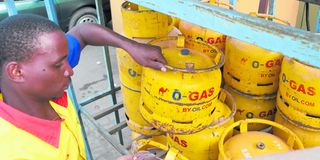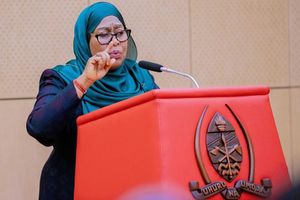Liquefied petroleum gas imports soar in energy shift

What you need to know:
- According to the International Growth Centre about 7 per cent of all households in Tanzania currently use LPG
Dar es Salaam. Importers of liquefied petroleum gas (LPG) should be sitting pretty after the market maintained double-digit growth for three consecutive years, thanks to Tanzanians increasingly shifting to cleaner domestic energy options.
Imports by LPG marketing companies (LMCs) grew by 12.9 percent, up from 107,083 tonnes in 2016/17 to 120,961 tonnes in the 2017/18 financial year.
Imports also grew by 20 percent in the following year, reaching 145,800 tonnes, then recorded a massive 30 percent growth, reaching 190,248 tonnes in the 2019/20 financial year, data from the Energy and Water Utilities Regulatory Authority (Ewura) shows.
This indicates that there is a continuous growth of the LPG market in the country, driven by people’s shift from traditional cooking energy to LPG for clean cooking, according to the Ewura acting director general, Mr Godfrey Chibulunje.
“A significant increase in LPG imports during the period under review is the outcome of our (Ewura) increased awareness campaigns on the use of cooking gas,” Mr Chibulunje told The Citizen yesterday.
Oryx Gas Tanzania’s head of commercial and supply, Mr Mohamed Mohamed, said the growth was encouraging, and Oryx would continue investing if the current conducive policies remain in place.
“We have every reason to continue investing because of the available opportunities for growth and fair investment returns,” said Mr Mohamed.
He attributed the current growth to the massive investment in the LPG infrastructure, including importation terminals, expansion and construction of new secondary depots and filling plants, as well as their distribution network.
“When you make LPG accessible and available you stand a chance to reach as many Tanzanians as possible,” said Mr Mohamed, noting that it was the firm’s goal to ensure that every household has an LPG cylinder.
He called on Tanzanians to go for LPG because it is cheaper - noting that, in urban areas, wood charcoal is three times more expensive than cooking gas.
He called on the government to continue its efforts to support growth of the sub-sector by not regulating too strictly the market so that investors can keep on investing.
“The market is very competitive. There are sufficient players, and there is an opportunity for more players to join us,” said Mr Mohamed.
“The government should continue letting the market free as it is currently doing so that investors can keep competing and investing in the free market economy.”
Taifa Gas Tanzania Ltd managing director Hamis Ramadhan seemed to speak the same language, calling on the government not to indulge in price capping.
He said the current double digit growth of LPG consumption means that the market is growing, and this is because the sub-sector is still at an infant stage, and is receiving much needed support from the government.
The growth, he said, suggests that the number of consumers of cooking gas is rising.
“Cooking gas is life-changing. People are upgrading from charcoal to gas,” said Mr Ramadhan, adding that people are fast becoming aware of proper use of gas.
“Cooking gas is by far cheaper compared to charcoal,” he said.
To meet the increasing demand, Mr Ramadhan said, the companies were competing in distributing cooking gas to all corners of the country.
Taifa Gas has 22 distribution stations countrywide.
In addition to that, Mr Ramadhan said, another three distribution points are at various stages of construction.



